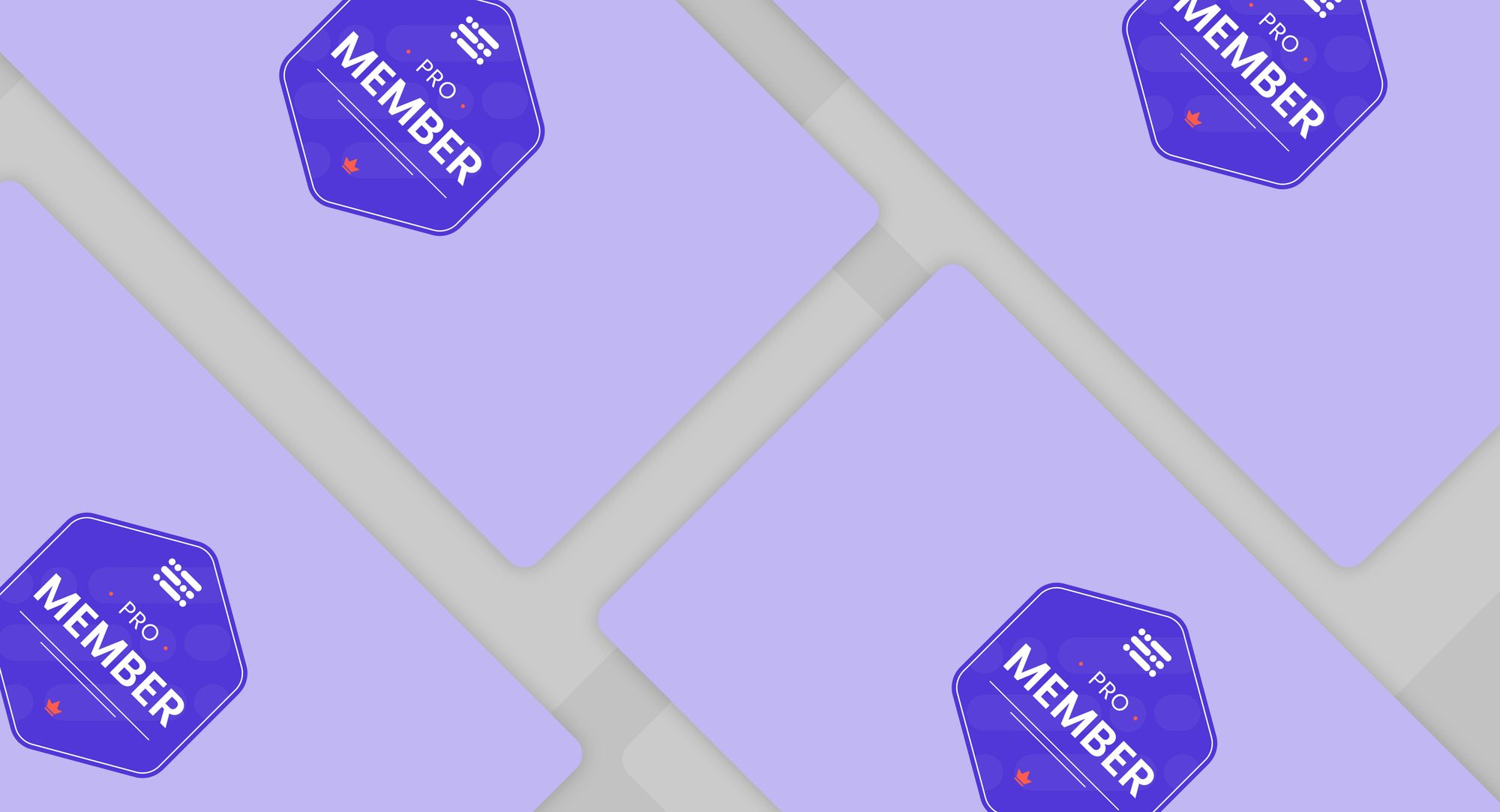What is developer relations? Developer relations, or DevRel, is, in essence, marketing to developers. It’s a set of strategies used to reach and engage with developers where they are, as well as to connect your company to a technical audience.
In addition, developer relations is a useful discipline when it comes to representing the org in front of a community and/or product user, and it can lead to higher customer satisfaction and lower product development costs.
In this article, we’re taking an in-depth look at developer relations and why it’s so important (as well as the meaning of DevRel):
- What is DevRel?
- A brief history of DevRel
- Types of Devrel
- What is developer evangelism?
- And what about developer advocates?
- Developer-first or developer-plus
- The benefits of developer relations
- Steps to a DevRel program
- Examples of developer relations programs
- Measuring the impact of your DevRel efforts

Psst! Why not download this article in ebook format, so you'll always have these insights at your fingertips?
What is DevRel? (i.e., DevRel meaning)
DevRel is an umbrella term that includes the tactics, strategies and processes used to build and grow relationships between devs and orgs. DevRel has many different goals depending on what the company needs to accomplish, but they often include a boost in sales and an increase in customer satisfaction.
It’s estimated that there’ll be about 29 million developers around the world by 2024 and, considering the dev population was smaller than 25 million in 2020, it’s clear it’s growing fast. This is likely spurred by the emergence of Web3 and blockchain tech.
Getting your product in front of this massive audience, as well as having them evangelize and advocate for it, is a huge opportunity.
According to Re:vere Communications’ State of Developer Relations 2021, developer relations can be defined as three things.
- A profession,
- A program within a company, and
- A range of activities, from developer marketing to product marketing and content creation.
When we talk about building relationships with developers, we’re referring to devs external to your company – they’ll be the ones using and (hopefully) championing your products!
There isn’t just one defined DevRel role – many people in an org can perform this job, although, nowadays, companies are starting to invest in teams dedicated to building, developing, and engaging with devs and communities.
After all, there are some challenges when it comes to marketing to developers, which developer marketing – and DevRel – aim to solve.
A brief history of DevRel
Humans are social creatures who love the sense of belonging to a community. Developers are no exception. Developer relations might be a relatively new concept but it’s grown and evolved over the years to meet new demands, devs’ needs and pain points, and the way companies interact with their audience.
The first DevRel program is said to have been built by Apple in the 80s, and the expression “software evangelist” invented by Mike Murray, who worked for Apple Computer’s Mackintosh division at the time. His role included convincing developers to create programs for the Mac, an effort that proved itself hugely successful.
Guy Kawasaki would eventually become Apple’s Chief Evangelist, leaving a strong mark on the brand and further popularizing its DevRel program. Even today, Apple, community and product evangelism go hand-in-hand.
With the advent of companies like Twilio and New Relic, developer relations as a discipline gained more strength and became increasingly popular.
Types of DevRel
There are different types of DevRel, each with its own unique focus and goals. Here are some common types:
Developer advocacy
Developer advocates are responsible for promoting and evangelizing a company's products or services to developers.
They work to build relationships with developers, help them understand the value of the company's offerings, and provide support and guidance as needed.
Developer experience
This focuses on creating a positive and engaging experience for developers who use a company's products or services.
It includes creating easy-to-use APIs, developer tools, and documentation that make it simple for developers to integrate and use the company's offerings.
Community management
The community manager role is just one of the many different types of developer relations jobs out there. These managers are responsible for building and nurturing a community of developers around a company's products or services.
They work to create a sense of belonging among developers, encourage collaboration and knowledge-sharing, and foster a culture of innovation and experimentation.
Developer education
This focuses on providing developers with the knowledge and skills they need to be successful in using a company's products or services. It includes creating training materials, tutorials, and other educational resources that help developers learn and grow.
Developer evangelism
Evangelists are responsible for spreading the word about a company's products or services to a wider audience. They work to build relationships with industry influencers, speak at conferences and events, and create content that helps to promote the company's offerings.
Let's look into some of these in more detail:
What is developer evangelism?
And why is it important? Developer evangelism can help you to drive sales and promote your product. In Guy Kawasaki’s words:
“My recommendation is that you enable people to test drive your product or service in order to make their own decision. Essentially, you are saying, ‘I think you’re smart. Because I think you’re smart, I’m going to enable you to try my product to see if it works for you. I hope that it does and that we can do business.’”
In short, a developer evangelist ensures that everyone has the tools they need to succeed; they communicate with users often, and are usually highly trained in coding and other technical skills.
And what about developer advocates?
It's not just about the DevRel meaning or developer evangelism; you may have also heard the term “developer advocate” – is there a difference between it and developer evangelist? The short answer is, yes!
While both terms sound similar, there are some key elements that make them stand apart. A developer evangelist puts a product in devs’ hands, while a developer advocate is there to show and teach their audience how to use the product.
Tim Berglund, VP DevRel at StarTree, puts it this way:
“[A developer advocate] is a person with an engineering background who is also a gifted teacher and communicator, building sample code, giving presentations, making tutorial videos, and (as occasional pandemics allow) traveling to in-person events to meet with your developer community face-to-face.”
Mary Thengvall, Director of Developer Relations at Camunda, has this to say about developer advocacy:
“DevRel professionals act as a liaison between their company and the technical audience – typically the end users of the product.
“While most professionals have the best interests of the business at the front of their minds, driving their day-to-day decisions, DevRel professionals have the best interests of the community as their driving factor.
“They, of course, care about the success of the business as well – it is, after all, what pays their bills – but they understand that, if the community is happy and successful as a result of using the product, the business is far more likely to succeed as well.”
Developer-first or developer-plus
Companies that implement DevRel in their operations may be developer-first or developer-plus, depending on their focus.
The goal of developer-first businesses is to build and sell products that developers will use (so they can be seen as business-to-developer), such as Twilio, Stripe, MongoDB, and Camunda.
As for developer-plus, these companies are more in the vein of B2B and B2C – they still consider the developer, but the main focus is to create and sell products to other businesses or consumers in general; for instance, Qualcomm, Google, Apple, Amazon, Salesforce, and Microsoft.
The State of Developer Relations 2021 found the vast majority of companies with a DevRel program to be developer-plus (63.6%).

The benefits of developer relations
While you should focus on the benefits your product gives devs, as well as how easy it is to use, you should also take support into account. Customers are likely to stay on if they feel supported and heard, so think about how devs like to communicate and ensure there’s a system in place to reach and engage them.
For example, developers may have access to key documentation, but if they don’t have anyone to talk to or share ideas, problems, and solutions, they may not stick around.
So, there are many advantages to implementing a developer relations program in your company, including:
Boost customer longevity
As mentioned, DevRel is an efficient way to forge and develop relationships with your developer audience, because they’re more likely to choose your product and even promote it to other people they know.
There’s so much tech around nowadays, that businesses must be able to stand out – one way to do that, beyond offering a product that solves a dev’s problem or pain point – is to build long-lasting relationships, offer support, give valuable information so they can make the most of your product, answer all questions, and more.
Boost customer satisfaction levels
Happy customers are more engaged and unlikely to churn, and DevRel can help to keep them satisfied. This is because their needs are being met, whether they want a platform to provide product feedback and feel heard or a place to discuss your tool or software with peers.
Lower feature/product costs
Another thing to consider is that developers can give you feedback every step of the way, so you end up with a product that meets a need no matter what. As they help you to tweak your offering, whether a feature, an existing product, or something new entirely, you save time and money.
Communicate better with developers
Devs can be a tough crowd, but this doesn’t mean it’s impossible to get their attention. It’s just that the way you go about it is a bit different when compared to B2B and B2C strategies.
DevRel is your answer. Instead of simply hammering home your product’s benefits, make sure you also speak your audience’s language and know where they’re coming from. Developers are very interested in learning why a certain feature or tool is important, so tell them that.
Communicating with them means being straightforward, avoiding sales-y talk, getting to the point quickly, staying clear of “fluffy” language, maintaining regular contact, offering solutions to their problems, helping them speak to experts, etc.

Create developer advocates
Having your target audience advocate for your product is a huge goal of DevRel. Traditional marketing tactics may not get you very far, and there are only so many ways to convince devs to give your product a chance.
However, with DevRel techniques and strategies that engage devs, there’s a higher likelihood they’ll want to share your product with their peers. Advocates tend to be highly technical people, and can also give feedback and influence your product roadmap.
And, of course, if they love your product, they’ll also recommend it to others.
Deliver the right product
The last thing you want is to spend time, money and effort on building a new product only to discover no one wants it…
DevRel is not just about influencing developers to purchase, but also making sure you’ve got it right from the get-go. Knowing your audience is crucial for this because it lets you understand their pain points, needs, and demands, which you can then apply to your product development.
When your product is ready to launch, you’ll already have a segment of the developer market wanting to give it a try.
There are many other benefits of DevRel, but these already help you to understand the importance of investing in a good program in your company!
Let’s take a look at an example below.
Steps to create a DevRel program
It’s easy to sideline developer relations when you already have so much on your plate, but it’s crucial not to let it become an afterthought.
DevRel programs can help you increase the engagement levels of your audience, boost customer success, increase brand awareness, etc., so make sure you’re implementing one in your organization.
Whether you’re flying solo or are part of a team, there are several things you can consider when coming up with your plan. They are:
1. Understanding your target audience
A key step you should never skip! Getting to know your developer audience means drilling down into demographics, psychographics, needs, etc., which can be achieved through:
- Studying analytics to find patterns,
- Creating user and buyer personas,
- Sending out surveys to developers,
- Seeking feedback and answers to your questions,
- Performing competitor research, and more.
All this will help you to create better marketing strategies, since you’ll understand what your audience is looking for and gain insights into new opportunities.
Plus, you can also improve devs’ experience, which we’ve already seen leads to higher satisfaction levels and, therefore, engagement and longevity.
Know who your target market is so you can create tailored messaging and content that appeals to your specific audience segment.
2. Obtain feedback from devs
We’ve covered this above, but it’s worth repeating because it’s such an important aspect of DevRel. Developers are increasingly part of the tech buying process and have more buy-in than ever before, so listening to them can boost your developer marketing.
This is also useful for the first step, since you can learn more about your customers!
On top of this, remember that dev feedback can help you to:
- Address issues before your product is launched,
- Understand needs and pain points,
- Drive more sales,
- Keep development costs down,
- Stay ahead of the competition, etc.

3. Get a DevRel team together
With developer relations gaining more importance in the past few years – and, due to the dev population growth we’re seeing – you might want to hire a team focused solely on DevRel.
This will allow them to spend more time on fostering those all-important relationships with developers, as they can continuously reach out to them, grow your brand awareness, interact one-on-one with devs, and so on.
Whether external evangelism or community management, think about what you want to achieve and how you can get there.
4. Measure your success
As with any other marketing strategy or efforts, you want to both track and measure the success of your DevRel program from start to finish. This means understanding what worked best and what didn’t, as well as if everyone’s goals align in the company.
Measuring the impact of your program helps you save money too, since you gain valuable insights into which areas to invest and focus on, and which to overlook.
You’ll also be able to understand which features developers prefer, which products are used more often, if there are any business areas you haven’t explored, etc.
5. Act on all feedback
As with any other marketing strategy or campaign, you’ll want to act on the feedback you receive – first, you must rank it so you know what to prioritize.
Listening to feedback allows you to improve your offerings, increases the engagement levels of your audience, shows devs you’re listening to them, makes them happier, etc.
IRL examples of developer relations programs
Several companies have been investing in DevRel for a very long time, including MuleSoft with their MuleSoft Ambassadors program. This program allows ambassadors to help devs and users connect and share their experiences, as well as speak publicly and coach others.
The result is that they can better help their product managers, get to know their personas better, build more efficient go-to-market strategies, etc.
You can read more about this topic in our article “How developer champions can help with product adoption”. In it, which Sabrina Marechal and Jason Johl, from MuleSoft, talk to us about the importance of a developer community, how PMMs and developer community managers can work together, how MuleSoft’s developer community is structured, how champions help with GTM strategies, and so much more.
GitHub also has a developer relations program, though the company hasn’t invested in it as much as other organizations. Their strategy focuses on highlighting people’s contributions, making sure devs have all the resources they need to grow, and other grassroots tactics.

How to measure the impact of your DevRel efforts
We briefly mentioned how important it is to measure the impact of your DevRel program, so let's dive into it a bit more in-depth into the key performance indicators (KPIs) you should consider.
These KPIs will differ from the ones you use in your developer marketing campaign, as dev marketing has different goals than DevRel, so you want to choose the right metrics to measure.
Developer relations is about forging, maintaining and developing relationships with your audience, while developer marketing looks at the strategies and tactics used to boost product adoption, tech evangelization, etc.
So, when it comes to measuring DevRel impact, you should look into KPIs that focus more on people and what they do, including:
Boost product awareness
This refers to how aware your audience is of your product. People need to know it exists in order to use it, so make sure you have product visibility before anything else. The more successful a DevRel program is, the higher the awareness is.
How do you measure this KPI? Through metrics like number of emails opened, increased community engagement, and number of mentions on other websites and events, for example.
Build relationships with people
People are at the heart of DevRel, so you must build high-quality relationships with them, so you can build trust with developers and have a community that helps you improve your offerings, be it through feedback or by trialing your product.
All this is crucial to stay competitive, so consider forging relationships with devs by creating or managing forums, answering their questions, and organizing hackathons, for instance.
You can measure this KPI with metrics like: increased traffic to website, a boost in social media interactions, longer time spent on page reading your content, great quality feedback, etc.
Grow your community
Getting new members in your community is vital to grow it, so this is a metric you can easily keep an eye on. Of course, quality interactions and engagement are preferable to having a high number of users who don’t engage, so keep that in mind.
You can monitor the views your content gets, track the number of sign-ups to your community or product portal, whether you’re increasing traffic to your pages, etc.

Create documentation
Do you have documentation that makes your products easy to use? Are developers asking the same questions over and over again and not getting the answers they need in your content? Make sure that anything you build meets devs’ needs and solves any issues they may have.
You can measure the efficacy of this by checking if developers ask fewer questions after you’ve released your product’s documentation, for example.
Net Promoter Score
The Net Promoter Score (NPS) tells you how likely people are to recommend you to someone they know. You can send out a survey with a question like: “on a scale of 0-10, how likely are you to recommend us/our product to a friend or co-worker?”
This will help you to put responders into categories. The people who answer between 0-6 are considered detractors, 7-8 are seen as passive responders, and 9-10 are the promoters.
Then, you use this formula to calculate the Net Promoter Score: NPS = % of promoters – % of detractors.
You measure this KPI by the number of promoters, which should be higher than the number of responders and detractors.
These are just some examples of how you can measure the impact of your DevRel program, but there are other KPIs you can take into account, such as:
- Product usage – how developers interact with your product. You can track this through churn rate, retention rate, ratings, reviews, duration of user sessions, and onboarding time, just to name a few.
- Number of active users – this KPI refers to the active users participating in your community (such as asking questions), and can be measured through the number of people interacting with the community and your product, as well as the number of people who sign up to your platform, for instance.

DevRel resources
Articles
- 3 core skills you need to kickstart your career in developer relations
- How to get a developer relations job
- Developer relations jobs 101: what they are and the skills you need
- What is a developer advocate?
- Top 7 DevRel metrics that measure the success of your marketing efforts
Books
- The Business Value of Developer Relations: How and Why Technical Communities Are Key To Your Success, by Mary Thengvall
- Developer Relations: How to Build and Grow a Successful Developer Program, by Caroline Lewko and James Parton
- The Accidental Community Manager: A Guide to Building a Successful B2B Community, by Adrian Speyer
Podcasts
Key takeaways
So, what is developer relations?
DevRel advocates on behalf of companies for problems, features, tweaks, etc. It takes the feedback developers give to improve the quality of the product and better understand the pain points of the people using it.
Part of DevRel is also creating great content for developers to boost awareness of a company’s offerings, engagement with devs, and more. It’s important that companies keep their target audience, developers, in mind no matter what.
As Mary Thengvall says:
“[DevRel values] people first and technology second. This may seem backward… after all, we work for tech companies, the success of whose products pay our bills.
“But here’s the thing… we all know that the best sales people, the best marketing folks, the best… well… PEOPLE – the people we most enjoy being around! – prioritize people over product. This is just another reason how developer relations is related to product, marketing, even sales, but isn’t quite the same.”
Step up your developer marketing game with exclusive templates, frameworks, content, and more, by becoming a member of the Developer Marketing Alliance.





